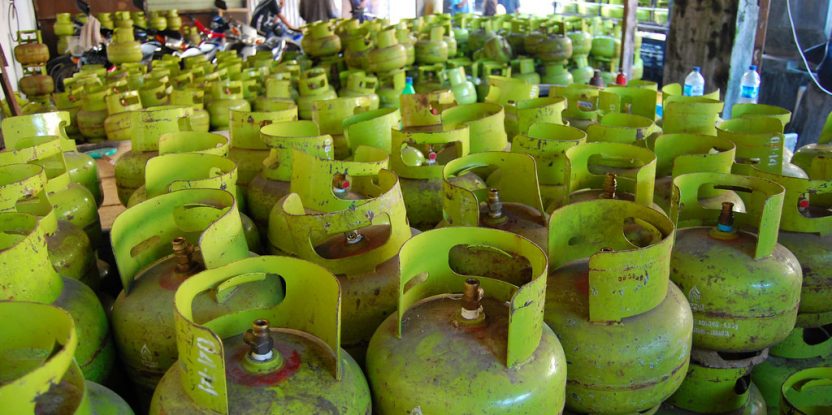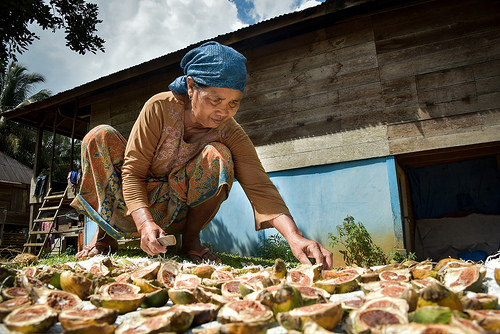
The UN REDD program was launched in 2008 to “reduce forest emissions and enhance carbon stocks in forests while contributing to national sustainable development”. Three years later the Cancun Safeguards were introduced to provide guidance to national governments on how to protect local people from potential political, social, economic and environmental impacts related to REDD+.
Monitoring and evaluating the impact of REDD+ efforts by governments and NGOs are key to understanding what works. But most of the M&E activities to date have been focused on levels of deforestation and carbon emissions, with little work done to build robust systems for monitoring social impacts on communities that live in these landscapes.
“There have been a series of papers that have looked at what a poor job studies from the mid-1990s to 2000s on the very early forest carbon projects did to examine social impacts,” says Pamela Jagger, a researcher at the University of North Carolina.
“Often incredibly rigorous studies of forest cover and biodiversity impacts would be coupled with a handful of unstructured qualitative interviews with a few village leaders to talk about social impacts,” she adds.
USING WHAT’S ALREADY THERE
Given very limited funding and technical support to develop monitoring and evaluation systems for REDD+ social safeguards, Jagger and Rana set out to figure out if it was possible to use existing data sources to understand the impact of REDD+ on people living in forested areas.
They wanted to explore whether existing data collection efforts that were not directly linked to REDD+ could help draw a picture of how community participation, tenure and poverty have been impacted by REDD+.
So they started digging for data that were publicly available, had geographical references so they could be linked spatially to REDD+ project sites, had national or sub-national coverage, and were available for the time period before and after REDD+ was implemented.
What we found for Indonesia is that there is a lot of data already out there that could be useful to help paint a picture of the social impacts of REDD+
They focused their work in Kalimantan, the Indonesian part of Borneo, and home to some of the oldest and richest forests in the world — much of which was been destroyed due to logging, forest fires and palm oil plantations.
“What we found for Indonesia is that there is a lot of data already out there that could be useful to help paint a picture of the social impacts of REDD+,” says Jagger.
The team looked at a wide range of publicly available data from health insurance coverage for local communities, to land tenure and mobile phone usage, all potential indicators of social impacts.
“For example, data on increased take up of LPG stoves in a village could suggest welfare improvement and reduced reliance on forests and firewood for cooking,” Jagger points out.
CANCUN 3 & 5
The team found that the available data allowed them to evaluate two of the five Cancun social safeguards — respecting the knowledge and rights of indigenous peoples and local communities (safeguard number 3), and avoiding the conversion of natural forests and ensure that activities conserve forests, biodiversity, ecosystem services, and enhance other social benefits (number 5).
Overall, the team found that people felt more tenure-secure, and that their property rights were being protected as result of REDD+. This was deduced by looking at data on how farmers use their land.
“For example, we noted increased agricultural intensification in Central Kalimantan, which is a mechanism for reducing deforestation because it decreases the need to convert forest to agricultural land,” says Jagger.
Mobile phone usage is another example. An increase in the number of people using mobile phones indicated better economic conditions for people in these villages.
The team also looked at the use of poverty certificates, or ‘poor letters’, which are issued by village leaders to enable people to access social welfare schemes.
“The research shows an increase in the number of poor letters issued in REDD+ villages, which could indicate an increase in poverty levels,” says Jagger.
“But this could also be due to increased awareness of people’s rights to access these social services as a result of REDD+. So more research is needed in this area,” she adds.
THE RIGHT DATA AND MORE OF IT
Moving forward, the team recommends against designing entirely new monitoring and evaluation REDD+ systems for data collection on social impacts, but adds that this method does not preclude other monitoring and evaluation that could be instrumental in understanding local impacts of REDD+, including efforts by REDD+ projects to include social impact components in their own evaluations.
The study shows that governments can monitor and evaluate REDD+ through existing data and this can be expanded if more indicators are included in ongoing data collection efforts in the future.
One thing is clear: the researchers say data that are regularly collected need to be improved to give a broader picture of REDD+ impacts.
“Even though there are a lot of socioeconomic data sources for Indonesia, they may not cover the right time periods, may not be geo-referenced, or may be missing important indicators,” says Jagger.
For example, in West Kalimantan where the researchers had a sample of more than 5,000 villages, when they looked closely at each village the data weren’t complete. So more than half of the villages could not be included in their study.
“It’s a tremendous opportunity,” says Jagger.
“If the government was to put into place a system where they rely on existing ongoing data collection efforts to analyze REDD+ social impacts, they could simply add a few targeted questions to their regular data collection activities,” she adds.
Jagger says this would help even out some of these variables and provide real insights into the social impacts of REDD+ on communities.
Amy Duchelle, a senior scientist at the Center for International Forestry Research (CIFOR) who also studies social safeguards as part of the Global Comparative Study on REDD+, says more research like this is needed.
“This is an important study, since it provides insights for monitoring social safeguards across a landscape in a robust, yet cost-effective way,” she says.
THE BIG PICTURE
REDD+ has been called a ‘win-win-win’ solution, addressing climate, the environment and human welfare. But Jagger says it’s important to understand the trade-offs, and it’s hard to do that if you don’t have really good data that focus on social impact in communities.
“We may end up saving lots of trees, but at what cost? If people are made worse off by REDD+ we need to know that,” she says.
We want you to share Forests News content, which is licensed under Creative Commons Attribution-NonCommercial-ShareAlike 4.0 International (CC BY-NC-SA 4.0). This means you are free to redistribute our material for non-commercial purposes. All we ask is that you give Forests News appropriate credit and link to the original Forests News content, indicate if changes were made, and distribute your contributions under the same Creative Commons license. You must notify Forests News if you repost, reprint or reuse our materials by contacting forestsnews@cifor-icraf.org.
